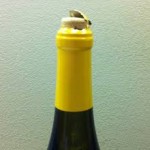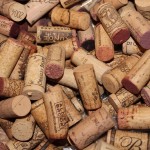“Do you think that bottle of wine is still good to drink?” I get asked that question by tens of people on a weekly basis and I totally understand their concern. It’s disappointing to know sometimes that people still associate wine as a special occasion beverage (but why?) and they end up storing a bottle of wine for way too long waiting for that special day. So if you have one such bottle just pop it open before you read ahead and discover if your wine is “still good”.
Wine faults occur due to various reasons and there are different methods how you can pick them up. Out here I have mentioned 3 of the most common wine faults and how to identify them (you don’t have to be an expert for this).
-
HEAT & LIGHT
Being the most delicate of all alcohoIic beverages wine needs special care (from bottling to consumption). Part of that special care involves keeping the wine under right temperature and away from strong light, which is why most wine bottles have coloured glass to mitigate effects of light. It goes without saying that one has to be extra careful about wine damage from heat & light in a country like ours. It’s not only the hot weather, but also the merciless conditions in which the wines are stored across majority of the liquor stores that calls for us (the consumer) to be more observant. Be careful the next time you are out to buy wine (always analyse the conditions in which the wine is stored).

These unfriendly conditions may give the wine a cooked effect. The faults in wine due to this can be identified by first looking at the bottle. A cork seal with the cork protruding out of the bottle or swollen or wine stains on the sides of the cork are easy ways to spot the damage.
These faults may also cause the wine to lose its luminous character and look dull. On the nose these wines will smell like cooked sweet sauces and unpleasantly jammy. This might also make the wine taste / smell like a wet carpet.
-
OXIDATION
This is a fault which occurs due to excessive contact of oxygen with the wine however this is a fault which at times is desired, surprised? Let me explain. Some wines (mostly red or some fortified) benefit from controlled oxidation. This contact with air (also referred to as “breathing”) allows these wines to open up and display more character and flavours of the wine.
If not desired oxidation can occur because of faulty packing (poor sealing of the cork), mishandling (heat & light) or due to oneself. Yes, please don’t forget about your wine bottle after having a glass or two from it. Even if you are refrigerating it but not using a proper wine preservation system don’t leave it for over 48hrs (unless you want to use that wine in a vinaigrette dressing or for cooking).
Oxidised wine can be spotted by the colour. Reds will start turning brick red or dull brown and whites will tip towards amber or an unusual gold. On the nose these wines should instantly remind you of vinegar, wine will also lose the fresh aromas and might have a bitter tinge on the palate.

3. CORKED WINE
aka Trichloranisole (TCA) is a chemical formed due to fungal reaction with chlorine. This can affect oak barrels also but are more commonly found in wines with a natural wooden cork.

This is one of the most commonly occurring wine fault and can be identified with aromas like that of musty newspaper or even a smelly dog (that shouldn’t be hard to spot).
Apart from the above mentioned faults there are a few more things that can spoil your wine but I will leave that for another day. Since we rely a lot on our nose while tasting / drinking wines always keep your nose sensitive to other unpleasant odours such as a rotten egg, varnish (nail polish remover), cabbage or horse stable smell which if found in your wine indicates spoilage.
However one should always remember that wine is a pleasant experience and the smell and taste should remind you of pleasant things. Always back your senses and keep in mind that the only way to be an expert is to keep trying new and good quality wines responsibly.
Tulleeho!


